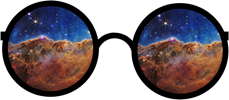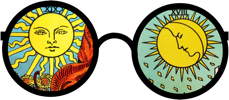Tarot Readings
 The origins of Tarot remain a mystery.
The origins of Tarot remain a mystery.
It is believed that Tarot cards were invented in northern Italy sometime in the 1440s, influenced possibly by a mix of esoteric knowledge from Egyptian Mamluk*, Jewish Kabbalah, and the Chinese I Ching. However, no one really knows.
Ordinary playing card decks originated in China and appeared in Europe in the late 1300s.
The first documented Tarot decks were recorded between 1440 and 1450 in Milan, the decks were hand painted. Once the printing press was invented Tarot cards started to be massed and produced and the cards became popular across Europe. Tarot decks used 78 cards divided into two sections. The Major Arcana consists of 22 cards, without suits. The Minor Arcana consists of 56 cards divided into four suits of 14 cards each.
The idea that the origins of Tarot stemmed from ancient Egyptian secrets was promoted by the 18th-century Freemason and Protestant pastor, Antoine Count de Gebelin (1719- 1784). Without any historical proof, De Gebelin wrote in his essay, “ The Primeval World, Analyzed and Compared to the Modern World”, (volume viii,1781) that he believed that Tarot held the secrets of the ancient Egyptians and that there was a mystical connection between the Tarot’s 21 trumps and fool with the 22 letters of the Hebrew alphabet and the Kabbalah.
Tarot and Divination
Jean- Baptiste Alliette (aka Etteilla), a French occultist and Tarot researcher were the first to develop interpretations for Tarot cards. He published his own Tarot deck in 1789, specifically to be used for divination. In his book, “Etteilla, A Way to Entertain Oneself with a Pack of Cards”, he claimed to have been influenced by the Book of Thoth, an Egyptian book supposedly written by Thoth, an Egyptian god. The Book of Thoth consisted of 42 books containing the whole philosophy of Egypt. Etteilla popularized Tarot and even today students of Tarot use some of his divinatory card interpretations.
Etteilla’s deck changed the structure of classic Tarot cards. His Tarot cards included both the Major and Minor Arcane, he added astrology concepts and the classical four elements and four humors popular among astrologers of that time period.
The Tarot of Marseille deck was commonly used in the 17th and 18th centuries. The popular Rider-Waite Tarot deck was published in 1909 and was created by A.E. Waite and illustrated by Pamela Coleman Smith, both were members of the Hermetic Order of the Golden Dawn. They changed the sequence and symbolism of many of the Major Arcana cards. They added illustrations to the Minor Arcana cards. The Rider-Waite deck was visually appealing, included instructions, and was easier for people that were interested in Tarot to understand. The Rider – Waite deck has inspired hundreds of imitations and variations.
Jungian Tarot and the psychological uses of divination
The renowned Swiss psychiatrist and one of the pioneers of the psychoanalytical movement Carl Gustav Jung (1875-1961) proposed that all human consciousness is linked together into the “collective unconscious”. The contents of the collective unconscious consisted of archetypes; cultural imprints, images, ideas, and thoughts of humanity throughout history.
Jung also believed in the power of synchronicity which he described as “coincidental, yet meaningful events in the external world that do not have an obvious cause”. Jung believed that synchronicity could serve as a guide to help individuals get in touch with their inner self and assist in achieving individuation. Jung considered astrology, geomancy, Tarot cards, and the I Ching to be intuitive, synchronistic methods that connected consciousness to “clouds of cognition”; a vaster field of absolute knowledge within the collective unconscious.
Jung believed that tarot cards contained archetypal symbols and icons and that the cards could be used as a diagnostic intuitive tool for self-observation and as a way to tap into personal and collective unconsciousness. Jung felt that the use of divination accelerated the process of individuation and help move an individual towards wholeness.
The artist and mystic, Robert Wang was inspired by Jung’s description of the Tarot and he created a Jungian Tarot deck and authored a trilogy of books about Tarot.
I started reading Tarot in 1973. My first deck is no longer available but was similar to the classic Le Tarot de Marseille deck and the Minor Arcana was not illustrated. When I first began reading Tarot there were a handful of decks available. Now you can choose from hundreds of Tarot and Oracle decks! Friends and clients throughout the years have given me many different decks and I have a wonderful collection.
Like Jung, I was awestruck by how Tarot works through the mystery of synchronicity. I do not see Tarot as fortune telling, but as a tool to request guidance from my client’s higher self. Tarot brings together mythology, universal archetypal energies, and a wide array of symbols to describe complex human emotions and transpersonal relationships. As well as insight into potential and current events. When we allow ourselves to be open to synchronicity we can more easily connect to our higher self and receive the information and guidance we are seeking. Tarot can be used as a tool for self-discovery and a way to develop intuitive skills.
I have been giving Tarot readings for nearly 50 years and have done thousands of readings and every Tarot reading is a unique and special experience.
Please contact me if you are interested in having a Tarot reading. Readings are available over the phone or via video.
*Sources:
Mamluk the knightly military class in Egypt in the Middle Ages; slave soldiers. (October 2013) In Wikipedia. https://en.wikipedia.org/wiki/Mamluk
Wang,Robert (1988) Tarot Psychology Handbook for Jungian Tarot Urania Verlags AG, CH-8212 Neuhausen
Place, R. M. (2005). The Tarot: History, symbolism, and divination. Jeremy P. Tarcher/Penguin.
“Court de Gebelin, Antoine”. Encyclopædia Britannica. Vol. 7 (11th ed.). Cambridge University Press. p. 324.
In The Archetypes of the Collective Unconscious (CW, Vol. 9:1, para 81), Jung wrote:
“If one wants to form a picture of the symbolic process, the series of pictures found in alchemy are good examples. . . . It also seems as if the set of pictures in the Tarot cards were distantly descended from the archetypes of transformation, a view that has been confirmed for me in a very enlightening lecture by Professor [Rudolph] Bernoulli. The symbolic process is an experience in images and of images. Its development usually shows an enantiodromia* structure like the text of the I Ching, and so presents a rhythm of negative and positive, loss and gain, dark and light.” [*a Greek term used by Jung to mean ‘things turning over into their own opposite.’]
Jung, C.G. (1973) Synchronicity: An Acausal Connecting Principle, Princeton University Press


 The origins of Tarot remain a mystery.
The origins of Tarot remain a mystery.